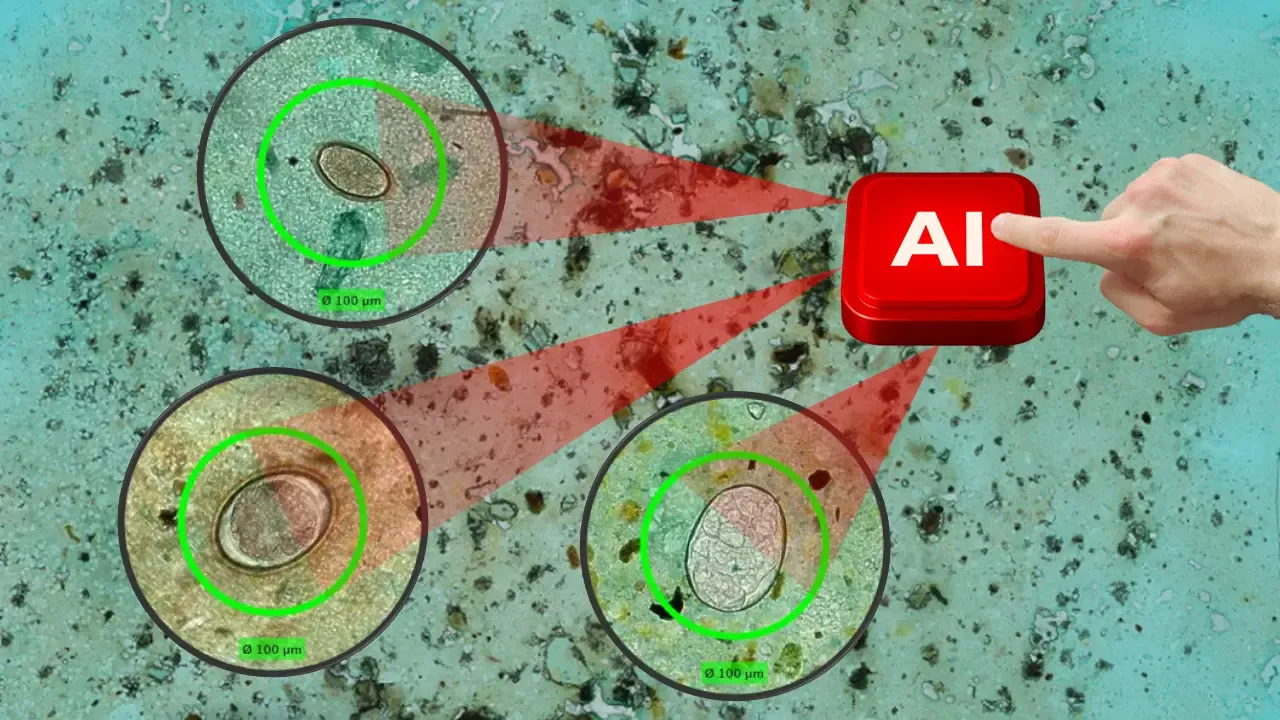AI microscopy improves parasite detection within primary health care

A new study from Karolinska Institutet, shows that artificial intelligence (AI) combined with portable digital microscopy improves the detection of intestinal worm infections, so-called soil-transmitted helminth (STH) in resource-limited settings. The study, published in the journal Scientific Reports, compared traditional manual microscopy with two AI-based methods for diagnosing soil-transmitted helminths (STHs) in stool samples from schoolchildren in Kenya.
Soil-transmitted helminths - primarily roundworm, whipworm and hookworm - are among the most common neglected tropical diseases, affecting over 600 million people globally.
These infections are especially harmful to children in low-resource settings, where they can cause malnutrition, anaemia and hinder physical and mental development. Accurate diagnostics are important to guide treatment efforts.
Analysed 704 stool samples
In the study, researchers analysed 704 stool samples using three methods: manual microscopy, fully autonomous AI, and expert-verified AI. The expert-verified AI approach, where local experts confirm AI findings in under a minute, proved to be the most accurate.
It detected 92 per cent of hookworm infections, 94 per cent of whipworm, and 100 per cent of roundworm - significantly higher than manual microscopy, which had much lower detection rates, especially for light infections.

“This research shows the potential of combining portable imaging with AI to overcome long-standing diagnostic challenges in global health,” says Johan Lundin, professor at the Department of Global Public Health, Karolinska Institutet.
The expert-verified AI system may drastically reduce the workload of experts while increasing accuracy, as it can analyse a sample in about 15 minutes, with expert confirmation taking just one minute.
This makes it a promising tool for use in primary healthcare settings, especially in areas with limited laboratory resources.
“Our method could provide accurate, fast, and scalable diagnostics at the point of care, particularly important as global STH prevalence declines and more sensitive methods are required for disease monitoring,” says Nina Linder, guest professor at Uppsala University and senior researcher at the Institute for Molecular Medicine Finland.
The study's first author is Joar von Bahr, PhD student at Department of Global Public Health, KI. The primary investigators of the study are, in addition to Johan Lundin and Nina Linder, Harrison Kaingu, CEO of Kinondo Kwetu Hospital, Kwale county, Kenya and Andreas Mårtensson, professor at UU. The study was a collaboration between researchers in Sweden, Finland, Kenya and Tanzania, and was supported by the Erling-Persson Foundation, the Swedish Research Council, the Wallenberg AI, Autonomous Systems and Software Program (WASP), and several private foundations in Finland.
Publication
"AI-supported versus manual microscopy of Kato-Katz smears for diagnosis of soil-transmitted helminth infections in a primary healthcare setting", von Bahr, J., Suutala, A., Kucukel, H. et al. Scientific Reports, online 27 June 2025, doi: 10.1038/s41598-025-07309-7.
